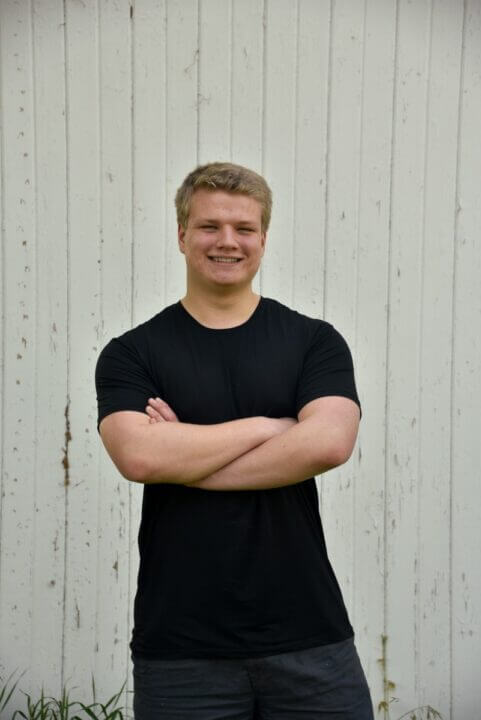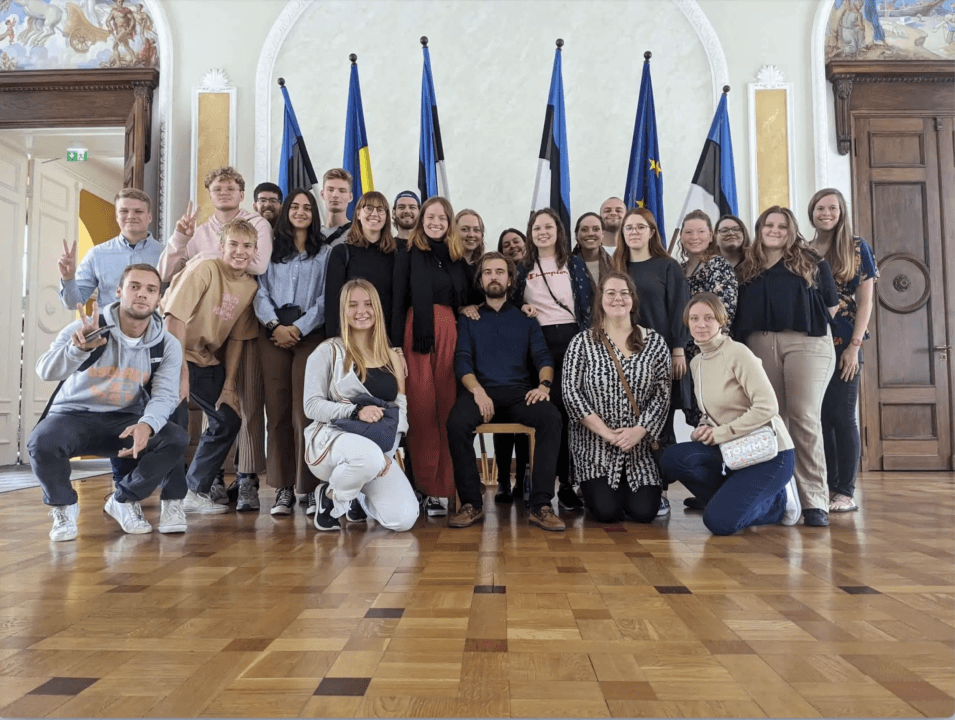Tere kõigile!
My name is Liam Kivirist and I recently became a member of the Chicago Eesti Maja, but my grandparents (Aelita and Valdek Kivirist) were long-time members when they were living in Glenview. I grew up in an Estonian-American household and during the COVID pandemic, I took an interest in diving deeper into that side of my family’s history. In the fall of 2020 I started self-studying Estonian, which led to me deciding to spend 3 months in Estonia this past summer, visiting the country for the first time and crossing paths with some of the friends I’d made through my studies online.

During my time in Estonia, I had the incredible opportunity to participate in the “Back to Our Roots” youth exchange, which brings people of Estonian descent from around the world to join locals on a 10-day adventure around the country, experiencing Estonian culture and exploring the topic of migration. I’ve been asked by the organizer to share a bit about my experiences in Estonia to those that may be interested and hopefully bring the annual project to the attention of more Estonians abroad who would be eligible to participate.
The “Back to Our Roots!” youth exchange in Estonia has been going on since 2016, helping young adults with Estonian roots dig into their families’ histories, learn more about present-day Estonia, and build new deep connections. All of the participants’ food, transport, excursion, and accommodation costs within Estonia are fully covered and travel costs to get to Estonia are reimbursed up to 300€. I’d heard of the project before, but after I’d been living in Tallinn for two months, I became acquainted with a former participant and had the opportunity to join at the last minute as a member of the local Estonian team.
Participants in the exchange came from a wide array of backgrounds, some had spent part of their childhood in Estonia while others were setting foot in the county for the first time a few days before the project’s outset. Coming in from countries ranging from Italy, Germany, and Sweden to Ireland, Argentina, and the US, it was a very multicultural and multilingual group, yet we quickly felt comfortable with each other and had the opportunity to share so many memorable conversations and adventures throughout the project.
The 10-day trip started off in Tartu, where we briefly got acquainted with one another before heading off to a quiet holiday center in Southern Estonia. Our accommodations and activities in Piusa were the perfect introductions to the project, Estonian culture, and the region’s beautiful forests, with hikes, visits to castle ruins, icebreakers, Estonian language classes, time in the sauna, and a folk music dancing workshop. On our way back to Tartu, we also stopped for a scenic canoe trip in Taevaskoda.
After four days in rural Southern Estonia, we returned to Tartu to experience the city’s rich culture and vibrancy. Guided by an enthusiastic Estonian member of our group who was a student at Tartu University, we had the chance to have a fantastic meal at Aparaaditehas, explore the city, visit the expansive Estonian National Museum with a guided tour, and many participants also visited local Estonian families to share a meal together.
Our next stop would be Kuru in Ida Virumaa, where we would have a few days to dig deeper into our family’s history, discussing what it means to have Estonian roots and the different paths and timelines our families took. Many participants’ families faced prosecution or deportation and decided to flee, while others stayed throughout the Soviet occupation and moved away later for more personal reasons. As we broke out into smaller teams, it was a frantic flurry of phone calls, notes, and ideas for how best to capture potential generations of history, challenges, and adaptation.
For our final stop, we made our way to Tallinn to learn more about what it means to be a digital society as well as some of the educational and career opportunities in Estonia. Of course, being in Estonia, we made a stop to stretch our legs and do a bog walk at the stunning Selisoo bog on our way there. During our visit to the e-Estonia Briefing Centre in Tallinn, we learned more about the country’s innovative digital services and X-Road software for secure data exchange between organizations. We also visited the president’s palace, Tallinn University, and the Estonian Academy of Arts and had the chance to tour WISE’s (one of Estonia’s unicorn startups) offices, meeting with former exchange participants who had decided to move to Estonia.
Our journey across Estonia culminated at a public event at the Vabamu Museum of Occupations and Freedom in Tallinn, where all of the project participants had the opportunity to share their family’s story and explore the theme of Estonian migrations throughout history via a presentation we’d spent several days in rural Ida-Virumaal preparing together. Throughout all of the campfire and bus ride conversations, pieces of everyone’s own story came out, but it was truly moving to hear it in a more structured form and see how it all came together to paint a vivid picture of the migrant experience.
Regardless of where we were from or where we were heading next after the project, all of the participants walked away with an abundance of rich memories and new friends as well as a renewed connection and appreciation to both Estonia and what it means to have deep roots connecting oneself and one’s family there.

For more information about the project, the organization behind it, and for updates about the project in 2023, feel free to visit: http://www.seiklejad.org/rahvuskaaslased.html
Ma oskan ka natuke eesti keelt ja ma sain seda Eestis viibides palju harjutada ning parandada, kuid minu grammatika ei ole ikka veel alati nii hea, nii et otsustasin, et oleks vist parem, kui ma kirjutaksin selle postituse inglise keeles. Aitäh lugemast!
Liam Kivirist
Source: https://chicagoeestimaja.com/
















